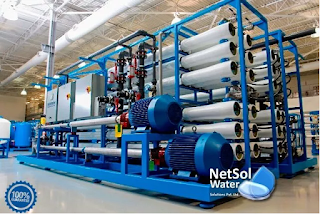How Do You Maintain A RO Plant?
The system works on the principle of osmosis, in which the osmotic pressure is reversed and water is driven through a semi-permeable membrane. This semi-permeable membrane removes a significant percentage of pollutants; around 95%-99% of the dissolved salts remain in the reject stream. The amount of salt in the feed water determines the water pressure. To overcome the osmotic pressure, a higher concentration necessitates a higher pressure. The water becomes more concentrated as it flows across the membrane during the osmosis process. This aids in achieving balance on both sides. RO membrane The membrane filter acts as a shield, keeping pollutants out of the water. Filter membranes come in a variety of configurations. RO membranes, UF or Ultrafiltration membranes, Nanofiltration membranes, and so on are all available. A semi-permeable membrane is used in reverse osmosis to allow water molecules to flow through. The membrane separates the water into different routes in this way. Th...



